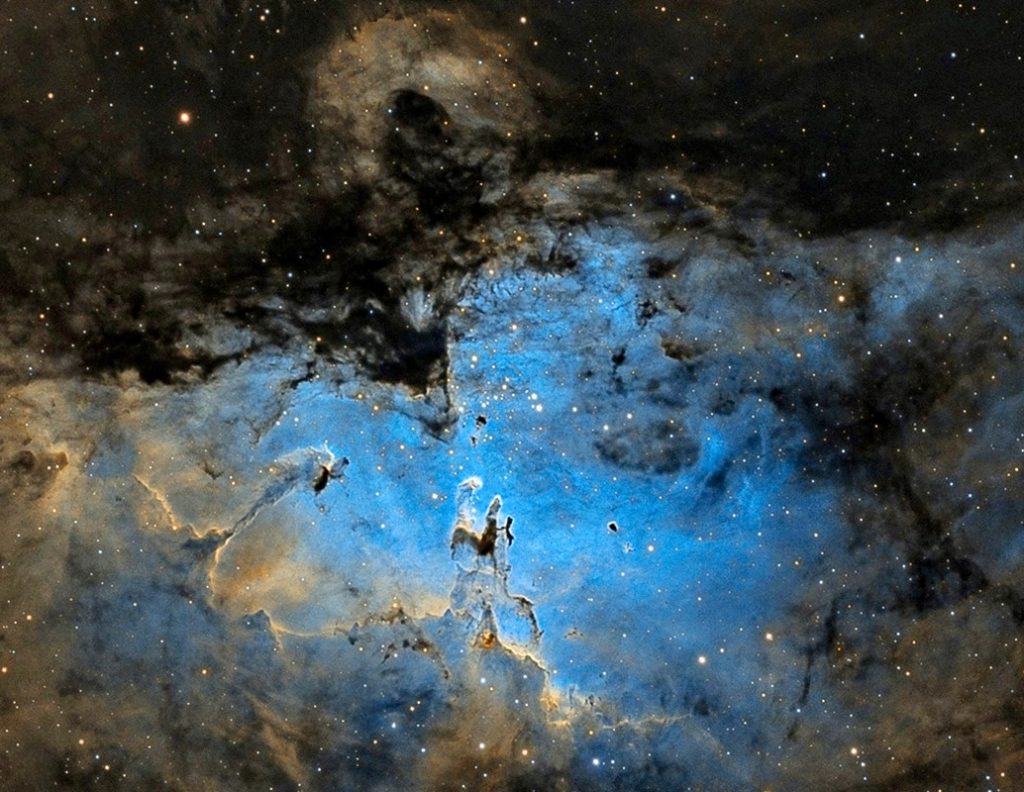June 2024
Mark Holmes captured noctilucent clouds over HLCO at about 23:30 on June 23rd.


Chris Digata has been busy at the observatory in June. Here is the stunning image of M16 (the Eagle nebula) taken over 3 nights. The technical details appear below the image.

Telescope #1
Askar 140 APO
30x180sec subs
Filters: NBZ 2, ALP-T (5nm H-beta + SII), ALP-T (5nm HA + OIII)
Telescope #2
8″ Rowe-Ackermann Astrograph (RASA 8)
90x120sec subs
Filters: NBZ UHS, Colour Magiv C2 (sii/oiii)
Integration
4.55h
Darks: 24
Flats: 24
Flat darks: 20
CAMERA: IMX571 cooled
May 2024
There was a tremendous auroral display over much of the country on Friday night (May 10th – 11th). Here are some of the images taken at High Legh by Tom (top, centre) and Carl (all the others).






The images of the Sun shown below were taken by Mark on Saturday 11th between 15:00 & 15:20 BST, using the Nuttellascope + iPhone with 25mm & 17mm eyepieces. The major sunspot group that created the Coronal Mass Ejections responsible for the Aurora is clearly visible.


